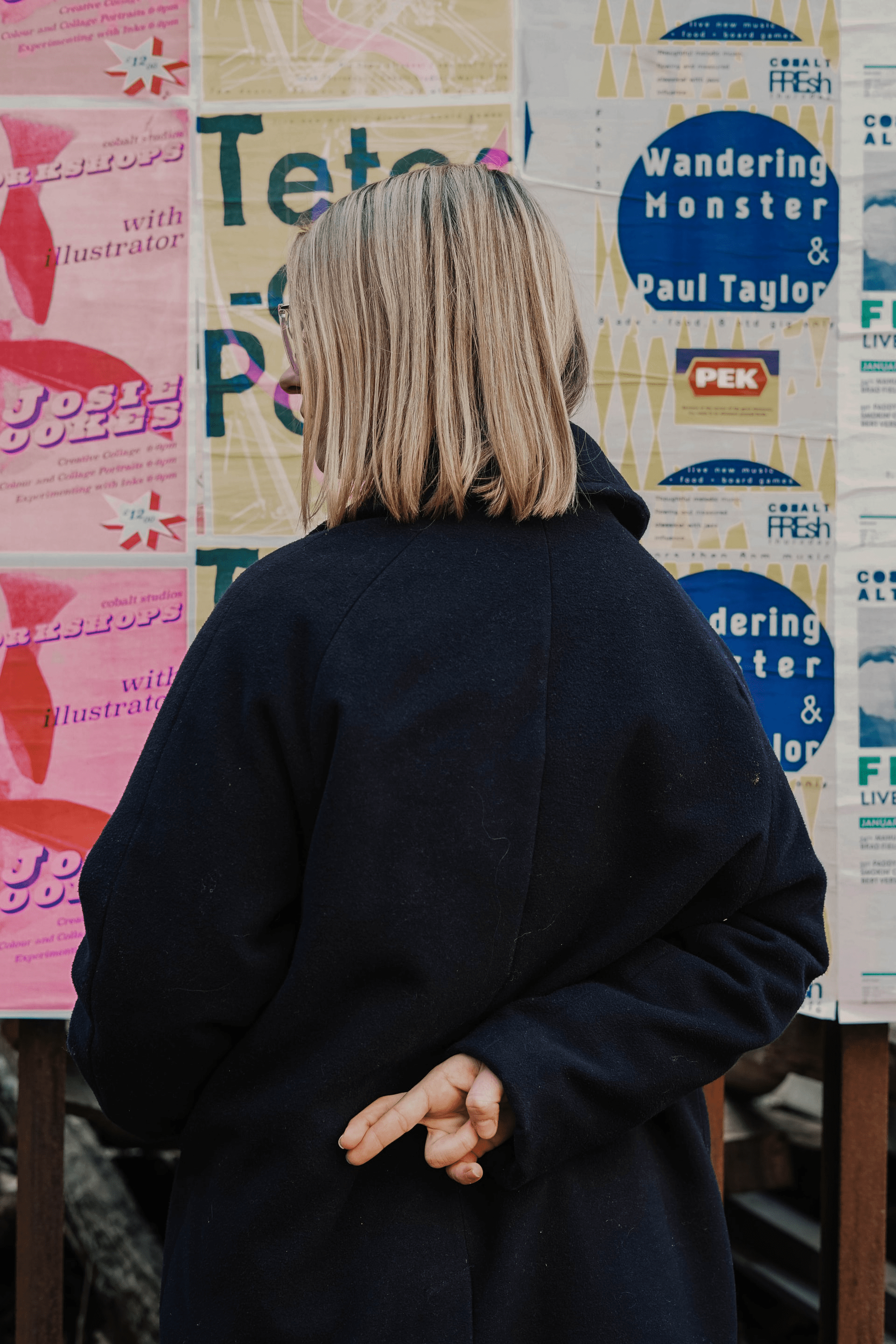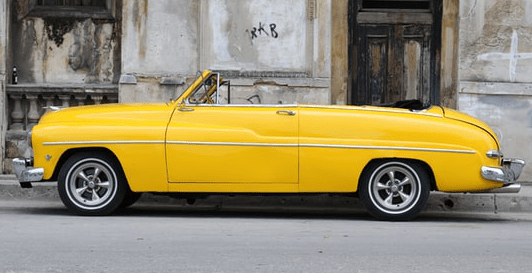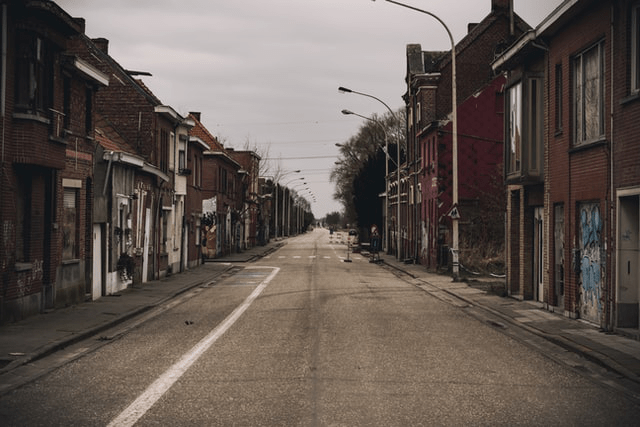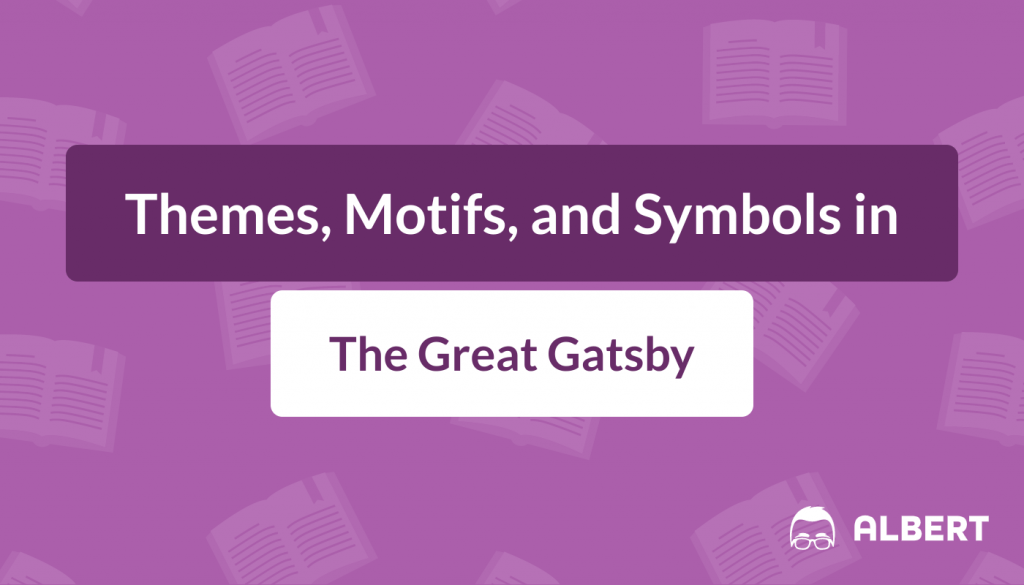One of the most commonly taught novels, The Great Gatsby is rich with opportunities for thematic analysis and broader real-world discussion. Gatsby is a fantastic opportunity to challenge students to see past the money, fancy clothes, and fancy cars and into what brings them lasting joy and purpose. In this post, we’ll break down the biggest themes, motifs, and symbols in The Great Gatsby.
What We Review
Major Themes in The Great Gatsby
The Great Gatsby lends itself to many themes, but the primary purpose of the novel is to provide a sharp criticism of the American Dream as defined during the 1920s. Other themes — such as obsession with the past or dysfunctional relationships — all tie in with this singular idea of the vanity of pursuing wealth as the only means to true happiness and success.
Pursuit of the American Dream

One very evident theme in Fitzgerald’s novel is the Pursuit of the American Dream during the 1920s. Then, as now, many Americans believed that “anyone, regardless of where they were born or what class they were born into, [could] attain their own version of success in a society where upward mobility is possible for everyone” (Barone). Born penniless, James Gatz, or Jay Gatsby, was determined to achieve his own American Dream the only way he knew how: by attaining massive wealth by whatever means necessary. However, even after seemingly fulfilling his dream by becoming filthy rich, those who inherited their wealth still treat Gatsby as an outsider —namely, the Buchanans. Fitzgerald uses Gatsby’s devastating realization to criticize people’s perception of the American Dream as simply the “culmination of wealth” (Pumphrey).
To paint a picture for the reader, Nick personifies Gatsby’s pursuit of the American Dream in the green light at the end of the Buchanans’ dock, calling it the “orgastic future that year by year recedes before us” (Fitzgerald 180). Much like Gatsby, Americans still today work their entire lives to achieve their idea of the American dream, only for some to meet an untimely end before reaching this dream. One of the most poignant quotes of the entire novel is at the end where Nick states in reference to this unattainable dream that “We beat on, boats against the current, borne back ceaselessly into the past,” showing the vanity and utter pointlessness, in his eyes, of this “American Dream” (Fitzgerald 180).
Failure to Live in the Present; Obsession with the Past and Future
Gatsby is the clearest example of a character stuck in the past due to his obsession with Daisy. Nick observes him “stretch[ing] out his arms toward the dark water” (Fitzgerald 21). The reader soon learns that Gatsby is continuously reaching for a green light at the end of the Buchanans’ dock, signifying his continual pursuit of Daisy, who is always just out of his reach. Gatsby is so overcome with visions of his past that he is shackled by his own imagination and kept from forming a genuine connection with the real Daisy.
The past also consumes Tom Buchanan, his one claim to fame being his football career in New Haven. Nick recognizes this immediately, feeling that Tom would “drift on forever seeking, a little wistfully, for the dramatic turbulence of some irrecoverable football game” (Fitzgerald 6). Tom’s mistress, Myrtle, is always rhapsodizing what she and Tom will do once they are married to one another, something Tom clearly does not see in his future. Even in casual conversation, the Buchanans, particularly Daisy, reminisce about the past or plan for the future, always planning trips to the city or recollecting old acquaintances. Whenever Daisy is forced into the present, she is visibly uncomfortable and anxious.
The Destructive Nature of Dysfunctional Relationships

Fitzgerald’s novel is littered with questionable characters and suspicious situations. Characters constantly act and speak behind each other’s back, making it difficult to trust or predict anyone’s motives in the novel. Tom and Daisy’s relationship is the most obvious example of secrecy leading to conflict regarding Tom’s “woman in New York” and Daisy’s long-lasting infatuation with Gatsby. Tom isn’t even truthful with Myrtle, his mistress, and tells her he cannot marry her because Daisy is Catholic and will not file for divorce.
Miss Baker’s friendship with Daisy is just as secretive and manipulative. When she speaks to Nick behind Daisy’s back, she makes Daisy out to be a fool. She manipulates situations between Daisy and Gatsby behind Nick’s back, even when she knows nothing good can come from their secret romance. Daisy does not even have a functioning relationship with her own daughter; when Nick asks about her, all Daisy has to say is, “I suppose she talks, and eats, and everything” (Fitzgerald 16). We do not witness her daughter’s growth into adulthood, but we can only imagine the damage this separation from her parents has caused her.
The parties that Gatsby hosts in his mansions are not filled with his closest friends; rather, complete strangers flood his halls to spill rumors about their host and leave without a word the next day.
Gatsby, the only person who seems remotely interested in forming functional relationships, still lies to Nick about his upbringing immediately after asking Nick his opinion of him, as if to save himself preemptively. Throughout the novel, Gatsby attempts to form a real relationship with Daisy, which proves impossible because she can never live up to the Daisy of his imagination.
Motifs and Symbols in The Great Gatsby
Fitzgerald’s novel is rich with symbolism, whether it be through color, setting, or objects. Each detail, no matter how small, enforces the tone of the scene. Many colors and settings are used in stark contrast with one another; for example, the white and gold Buchanan mansion and Daisy are vastly different from the bleak and gray Valley of Ashes. Gatsby’s car is both gold and green, signifying both his achievement of wealth and his continual pursuit of rich things, including Daisy Buchanan.
Color
There are four distinct colors repeated throughout the novel that each carry meaning beyond the surface. These colors are white, gray, green, and gold.
White
Daisy and Jordan are both dressed in white at the start of the novel, and the open windows cause the white curtains to float in the air. Both the curtains and the women in white represent both innocence and superficiality of these characters who float through life lacking depth of personality. Nick Carraway describes Daisy as being “high in a white palace”, calling her both “king’s daughter” and “the golden girl” (Fitzgerald 120). In this instance, Nick characterizes her as this lofty, worshiped being, which mirrors Gatsby’s perspective and reinforces the fact that Gatsby will never be good enough for her.
Gray

By name, The Valley of Ashes is represented by the color gray, which symbolizes the harsh conditions of the working class and overall lack of joy or hope in this place. George Wilson’s garage naturally resides in this desolate place, described as “unprosperous and bare” (Fitzgerald 25). Words such as “foul”, “solemn”, and “wasteland” are used to describe the place constantly under the watch of T.J. Eckleburg’s gold-rimmed eyes (Fitzgerald 24).
Green
Green symbolizes two primary things: money and lust. The leather seats in Gatsby’s car are a lush green color, implying that perhaps the bright yellow paint did not declare his wealth loudly enough. Tom forces himself into the driver’s seat of Gatsby’s car, emphasizing that he believes Gatsby to be undeserving of such luxury. The most prominent green object (other than money) is the green lantern at the end of the Buchanans’ dock. While this green light represents Gatsby’s dream to be with Daisy, it also more characteristically represents envy as Gatsby desires to have another man’s wife.
Gold

Gatsby’s Rolls Royce, later known as “The Death Car,” symbolizes money and the pompous lifestyle of the rich. Nick describes Daisy as a “golden girl”, Gatsby dons a gold tie for one of his many parties, and even the eyes of Dr. T. J. Eckleberg are rimmed in gold frames. In every instance, gold is both synonymous with wealth and “otherness”. Whether it is Daisy, Gatsby’s car, or even Dr. T.J. Eckleberg, each golden person or object is completely detached from the rest of society and feeling any sort of social responsibility. For example, Dr. T.J. Eckelberg’s looming presence over the Valley of Ashes
Setting
Valley of Ashes

George Wilson’s garage naturally resides in the Valley of Ashes, described as “unprosperous and bare” (Fitzgerald 25). Words such as “foul”, “solemn”, and “wasteland” are used to describe the place constantly under the watch of T.J. Eckleburg’s gold-rimmed eyes (Fitzgerald 24). Myrtle Wilson’s brightly-dressed, sensual persona stands out in stark contrast to her colorless background. Even though her character doesn’t “fit” the setting she lives in, she is permanently bound to live and eventually die in this hopeless place. George even attempts to leave, but the thoughtless actions of the rich quickly tear apart his dream of a better life.
West Egg and Gatsby’s Mansion
While similar in appearance, East Egg and West Egg are drastically different from one another in status. West Egg, where Gatsby’s mansion resides, is “less fashionable” than East Egg and represents “new money” (Fitzgerald 5). Nick describes Gatsby’s mansion ironically as an “imitation”, further supporting the idea that Gatsby is an imposter in the realm of the rich and famous. West Egg residents are more inclined to hold extravagant and wild parties than their East Egg neighbors, even though East Eggers have no problem attending these parties held by their “less fashionable” neighbors.
East Egg and the Buchanan’s Mansion

The mansions across the bay in East Egg are described as “white palaces”, further supporting that the color white implies something untouchable (Fitzgerald 4). The French windows reflected gold; vast gardens framed the property; “frosted wedding cake ceilings” hovered above every room, and “wine-colored” rugs sprawled across the floors (Fitzgerald 8). The author spares no detail to ensure the reader understands the exquisite luxury of the Buchanans’ home. East Egg residents also live at a slower and calmer pace than their neighbors, likely because they don’t feel the need to indulge in the luxuries offered at parties that are already at their fingertips.
Objects
Doctor T. J. Eckleberg’s eyes
Dr. T.J. Eckelberg’s eyes are painted onto a fading billboard that overlooks the Valley of Ashes. The eyes float independently of a face or even a nose and are framed in a pair of gold eyeglasses. Not much is known about Dr. Eckelberg; the narrator assumes that he either “sank down himself into eternal blindness” or simply forgot about his billboard and moved to a different city (Fitzgerald 24). Either way, the enormous eyes have a looming presence over the Valley of Ashes; constantly “brood[ing]” over this desolate place. You can define Fitzgerald’s choice of the word “brood” in two very different ways. These eyes could be “brooding” and watching over the city like a worried mother hen wishing to care for her chicks. Or, these eyes could be “brooding” because they are thinking deeply about everything they see that makes them continually unhappy.
Green Light

The green light at the end of the Buchanans’ dock represents Daisy in Gatsby’s eyes. Every time he sees it, he thinks of her and desires to have her. He finds hope in this light; as long as he can see it, Daisy is still just within his grasp. However, Nick sees this green light through much more critical eyes by the end of the novel. He refers to it instead as the “orgastic future that year by year recedes before us” (Fitzgerald 180).
Two important words are used to critique Gatsby’s dream, or more broadly, the American Dream. The first word, orgastic, has sexual connotations and pairs with this lustful desire Gatsby has for Daisy; she is his dream: she fascinates, entices, and overwhelms every part of his being. Likewise, the American Dream can become so consuming of an obsession that it takes on this euphoric or intoxicating appeal. The other crucial word is “recede”: as we pursue our version of the American Dream year after year, it doesn’t get any closer; it only “recedes” or moves farther and farther out of reach. Gatsby’s dream, personified in the green light, is the primary symbol of the novel and ties into Fitzgerald’s overwhelming critique of the American Dream throughout the novel.
Gatsby’s Car
Gatsby’s car has many roles throughout the novel, so much so, it could even be considered a secondary character. First, his car is used as a shuttle to bring people to his lavish parties; then, the car is used to impress Nick and convince him to do Gatsby a favor. Later in the novel, however, things take a dark turn. Tom forces himself into Gatsby’s car for their trip to the city. It is unclear why he does this other than to simply assert his own power over Gatsby. Finally, the car, driven by Daisy, murders Myrtle Wilson and is renamed the “Death Car”. A vivid picture of luxurious living with green leather interior and a bright yellowish gold paint job, Gatsby’s car is yet another failed attempt at reaching his American Dream through the accumulation of flashy and expensive things.
Wrapping Up
Although a relatively brief read, Fitzgerald’s novel is jam-packed with rich opportunities for thematic analysis and tracking motifs and symbols. Drawing on the text For quick assignment ideas, check out our 200+ Great Gatsby review questions, and check out our pre-made chapter quizzes, designed to track your students’ reading progress and comprehension before moving on to a new section of the text.
Works Cited
Fitzgerald, F. Scott. The Great Gatsby. Scribner, 2018.








